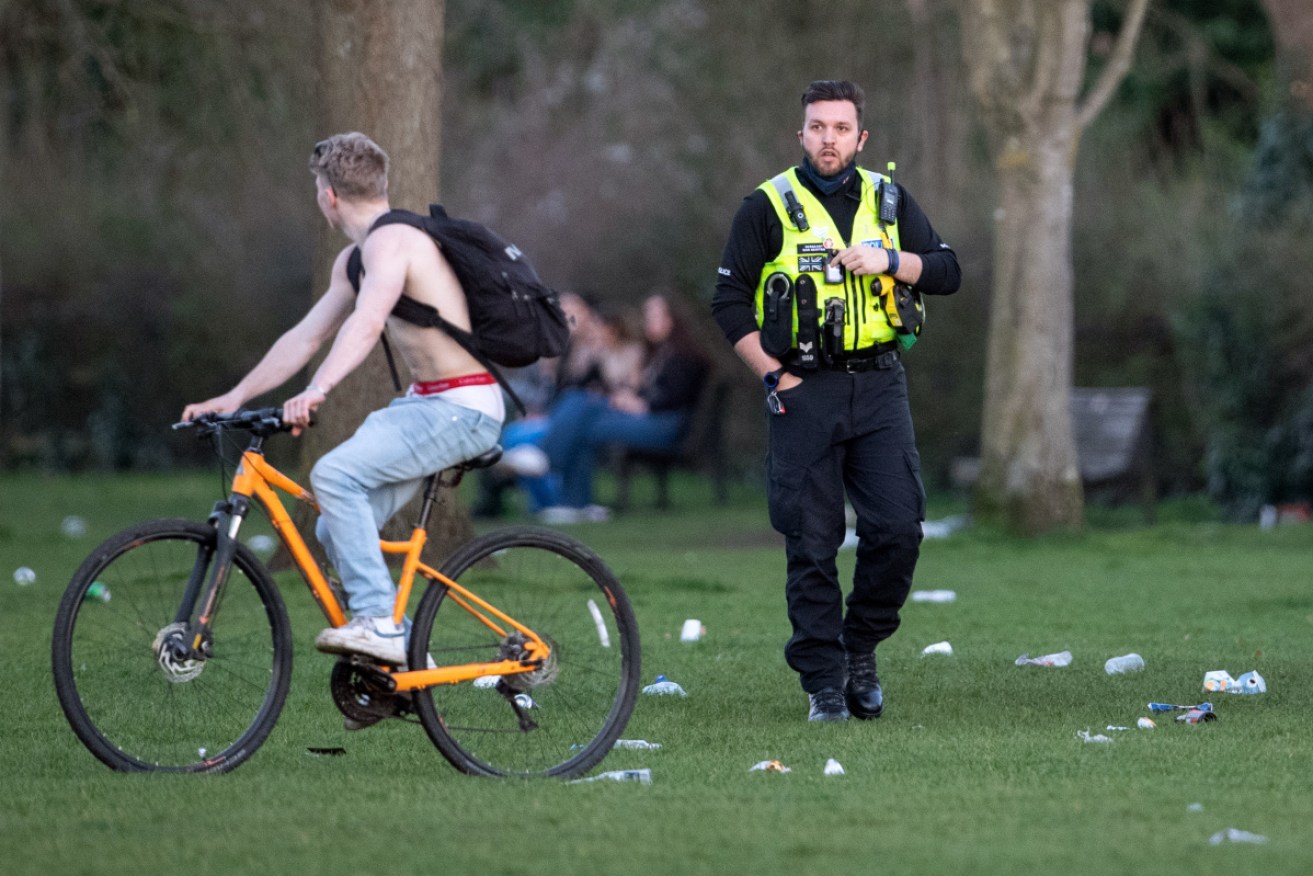‘Unprecedented’: Why COVID-19 infections have more than halved in the UK


Several factors have been raised to explain the dip in COVID-19 infections in the UK. Photo: Getty
Epidemiologists in the UK expected cases to double after the British PM dropped all COVID-19 restrictions on July 19.
Instead, new cases have more than halved in just two weeks.
Experts suggest the warm weather, the early start to the school holidays for some, the delayed Euro football tournament, and the fact many still act with caution could have played a role in lowering the infection rates.
On July 17, just two days before Britain marked its so-called Freedom Day, recorded cases hit a peak of 54,674.
It was the country’s highest daily total in six months, but that did not stop all rules on social distancing and mask wearing from being scrapped, and the last remaining closed businesses – such as nightclubs – from reopening.
Epidemiologists predicted the number of new daily cases could hit 100,000 a day.
But what has happened since Freedom Day has left them scratching their heads.
Britain went from a high of 54,674 on July 17 down to 22,287 on August 2, according to official government data.
Can Australia do what the UK did for its COVID cases?
The trend in the UK doesn’t mean Australia should follow in Britain’s footsteps and drop all restrictions immediately.
If a country isn’t adequately prepared, it can have disastrous consequences – just look at the Netherlands, where COVID cases skyrocketed by 500 per cent about a week after lockdown restrictions were lifted in late June.
University of South Australia chair of biostatistics and epidemiology Professor Adrian Esterman said even if Australia gets 70 per cent of its adult population fully vaccinated – like the UK – it still might not be enough to relax restrictions like England did.
“I don’t think we can actually say we can relax restrictions when we hit the UK (vaccination) level because the Netherlands tells us no, that’s not necessarily the case,” he told The New Daily.
“I think we will have to need a much higher percentage of the population vaccinated in Australia.”
So what did happen in Britain?
If you ask epidemiologist John Edmunds at the London School of Hygiene and Tropical Medicine, “nobody really knows what’s going on”.
But there is one thing experts are certain about – the drop in new infections cannot be attributed to herd immunity.
Not enough Britons have been vaccinated for the country to build up population immunity to stop the virus from spreading.
Although 70 per cent of the adult population has been fully vaccinated, there are still so many unvaccinated young people fuelling the spread.
A survey conducted between June 24 and July 12 found that five- to 24-year-olds accounted for 50 per cent of all infections, even though they are only 25 per cent of the population.
And what makes the drop in new cases “unprecedented to some extent” is that “it seemed to occur everywhere”, Professor Edmunds told Nature.com.
“But herd immunity would come in different places at different times,” he said.
Public Health England epidemiologist Meaghan Kall told The Guardian that antibody data suggested most age groups were getting “very close to herd immunity”.
Are the school holidays to thank?

Some schools finished early. Photo: Getty
Many young people are still unvaccinated, but they could be part of the reason for the dip in cases.
Schools in England shut for the summer holidays on July 23, which makes it too soon for experts to know if that had an effect on the data.
However, some schools finished a week earlier and there were many senior students who had finished exams and did not need to attend school.
Also, about 20 per cent of students were reported to have been self-isolating, meaning “the contacts of school-age kids have dropped quite dramatically over the past several weeks”, Professor Edmunds said.
This may be good news, but if the lack of contact between school-aged students has driven down the COVID-19 numbers, it shows just how big a driver schools and young people are to new infections.
What else could be a factor?
The drop in cases could be the result of the warm weather that has encouraged people to socialise outside, where it is less likely for the virus to spread.
It could also be a case of fewer Brits getting tested.
Or it may be that people are still being cautious despite the end of restrictions.
“People are still generally wearing masks, keeping their distance,” one government adviser told The Guardian.
“That means you still see the effects of that caution. People know now what the behaviours are that will protect them and those appear to be still being used.”
In the end, the drop in cases may appear more significant than it actually is.
The Euro 2020 football tournament contributed to a spike in infections in mid-July because there were many large gatherings in pubs, bars, private homes and stadiums.
If the tournament wasn’t delayed, Britain may not have hit such a record high in mid-July, making the drop in cases appear more pronounced.








